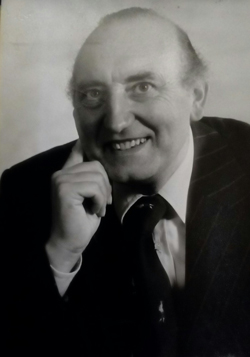Raymond Casey (1917-2016)
 Forthright and friendly, Raymond became an international authority on Lower Cretaceous stratigraphy and palaeontology
Forthright and friendly, Raymond became an international authority on Lower Cretaceous stratigraphy and palaeontology
Raymond Casey FRS was born on October 10th, 1917 at Folkestone in Kent. His mother was widowed in the war when Raymond was just one year old. From the age of 4 he collected fossils from the seashore near his home, which laid the foundation of a lifetime's devotion to palaeontology.
Geological Survey
He left school at 14 to work in a local shop, but his early fossil discoveries attracted the attention of professional geologists and in 1939 he joined the Geological Survey as an assistant to Cyril (later Sir) James Stubblefield. After the War and his service in the RAF, Raymond returned to the Geological Survey in 1946, initially in the lowly position of Assistant Experimental Officer. However, with the encouragement of Professor Percy Allen, Raymond was allowed to register for a PhD at Reading University in 1955, despite not having a first degree. His PhD (1958) was followed by a DSc in 1963. He went on to become Senior Principal Scientific Officer (Special Merit) in 1964.
Royal Society
Raymond’s research interests initially focused on the Lower Greensand and Gault of south-east England and the Isle of Wight, but in the early 1960s he began work on the Jurassic/Cretaceous boundary beds in eastern England. This led to a fruitful working relationship with Soviet geologists and he visited the Soviet Union several times from 1963 onward. Raymond became such a leading international authority on Lower Cretaceous stratigraphy and palaeontology that he was elected a fellow of the Royal Society in 1970. Four years later his wife Nora died, which was a great blow to him. Raymond retired from the Geological Survey in 1979 but continued to research, not only in geology but also on Russian postal history, which became the main focus of his research. He published numerous papers on postal history topics and received 8 gold medals between 1984 and 1997 while amassing a private collection that eventually sold for several million euros.
Raymond was a forthright, friendly character with a dry sense of humour: even on his death-bed he took pleasure in pointing out to the hospital staff that while he was in fact a proper doctor (of science), they were simply surgeons. He died on 26th April, 2016.
By Peter Rawson and Martin Simpson